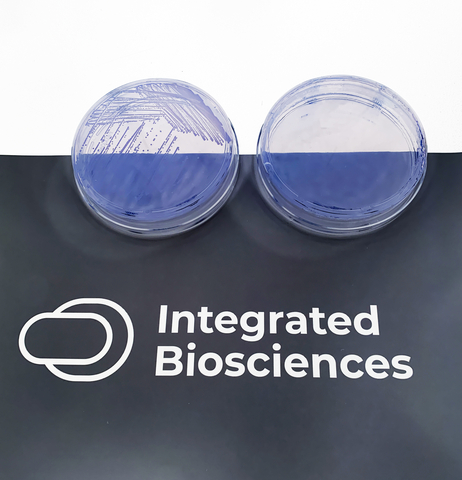SAN CARLOS, Calif.– Integrated Biosciences, a biotechnology company pioneering the use of synthetic biology and machine learning to develop next-generation therapeutics for age-related diseases, today announced the publication in the journal Nature of a peer-reviewed manuscript detailing the application of its platform in the discovery of a new class of small molecule antibiotics capable of addressing antibiotic resistance. This discovery represents one of the first new classes of antibiotics in the past 60 years and is the first discovered leveraging an AI-powered platform built around explainable deep learning. The paper, entitled “Discovery of a structural class of antibiotics with explainable deep learning,” was co-authored by a team of 21 researchers, led by Felix Wong, Ph.D., co-founder of Integrated Biosciences, and James J. Collins, Ph.D., Termeer Professor of Medical Engineering and Science at MIT and founding chair of the Integrated Biosciences Scientific Advisory Board.
Additional collaborators included researchers at the Massachusetts Institute of Technology (MIT), the Broad Institute of MIT and Harvard, the Wyss Institute for Biologically Inspired Engineering, and the Leibniz Institute of Polymer Research in Dresden, Germany. In their study, the researchers virtually screened more than 12 million candidate compounds to identify this new class of antibiotics.
“This discovery of a new class of antibiotics is a breakthrough result showing that artificial intelligence and explainable deep learning are uniquely capable of catalyzing drug discovery,” said Dr. Wong. “Our work makes publicly available several high-powered models to accurately predict both antibiotic activity and toxicity. Importantly, this is one of the first demonstrations that deep learning models can explain what they are predicting, with immediate and far-reaching implications to how drug discovery is done and how efficiently we can find new drugs using AI.”
Satotaka Omori, Ph.D., founding member and Head of Aging Biology at Integrated Biosciences, and a contributing author on the publication, said, “An important implication of this study is that deep learning models in drug discovery can, and in many cases should, be made explainable. While AI continues to make an impact, it is also limited by the many black box models that are commonly used and obfuscate the underlying decision-making process. By opening up these black boxes, we aim to create more generalizable insights that may be more useful in accelerating the use and development of next-generation approaches to drug discovery.”
In this groundbreaking approach, the team of researchers trained deep learning models on experimentally generated data to predict the antibiotic activity and toxicity of any compound. Drawing inspiration from AI used in other contexts, including DeepMind’s AlphaGo gaming technology, the authors designed new models to explain which parts of a molecule were important for antibiotic activity. The result was a new class of antibiotics with potent activity against multidrug-resistant pathogens. In one series of experiments, the researchers tested a candidate antibiotic in mouse models of MRSA infection and found that it was efficacious both topically and systemically, indicating that the compound could be suitable for further development as a treatment for severe and sepsis-related bacterial infections.
“This is an important validation of how important the integration of AI and explainable deep learning will be to overcoming some of the most vexing challenges in medicine, in this case antibiotic resistance,” said Dr. Collins. “Building on these validating studies and similar approaches, the Integrated Biosciences team is poised to further accelerate their integration of synthetic biology and a deep understanding of cellular stress to address a significant unmet need for new treatments targeting age-related diseases.”
“In any given class of drugs, there are often persistent issues that have limited clinical development. A key innovation in this study was that we could look to explainable deep learning to help us address specific issues, such as resistance and toxicity, and find solutions quickly,” said Dr. Wong.
Alicia Li, a research associate at Integrated Biosciences and a contributing author on the publication, added, “It’s really exciting to see how we’ve been able to demonstrate a new way to predict how useful a compound will be as an antibiotic, the likelihood that the compound will progress in Phase I trials, and whether or not the compound is one of potentially many other members in a novel class of drugs.”
Integrated Biosciences has built a body of research that, in addition to this new Nature publication, includes a Nature Aging paper published in May demonstrating how AI can be used to discover novel senolytics, anti-aging compounds that selectively eliminate senescent “zombie” cells. These compounds have shown promise in their ability to treat age-related diseases, such as fibrosis, inflammation, and cancer. A Cell Systems paper published in July demonstrated a synthetic biology-based platform allowing human control over aging-associated stress responses, enabling accelerated drug screens for targeting aging.


